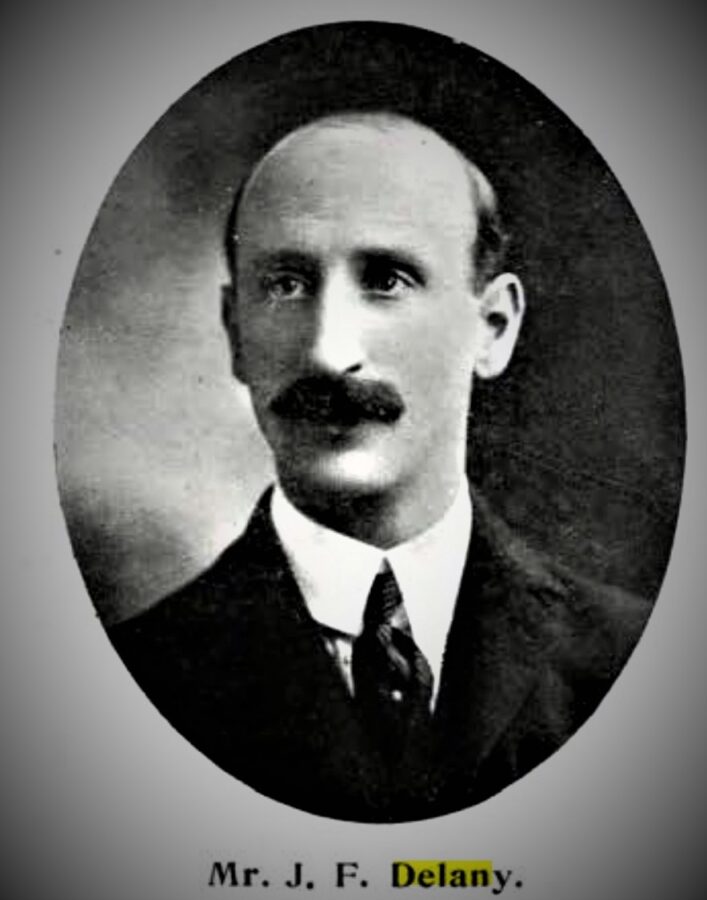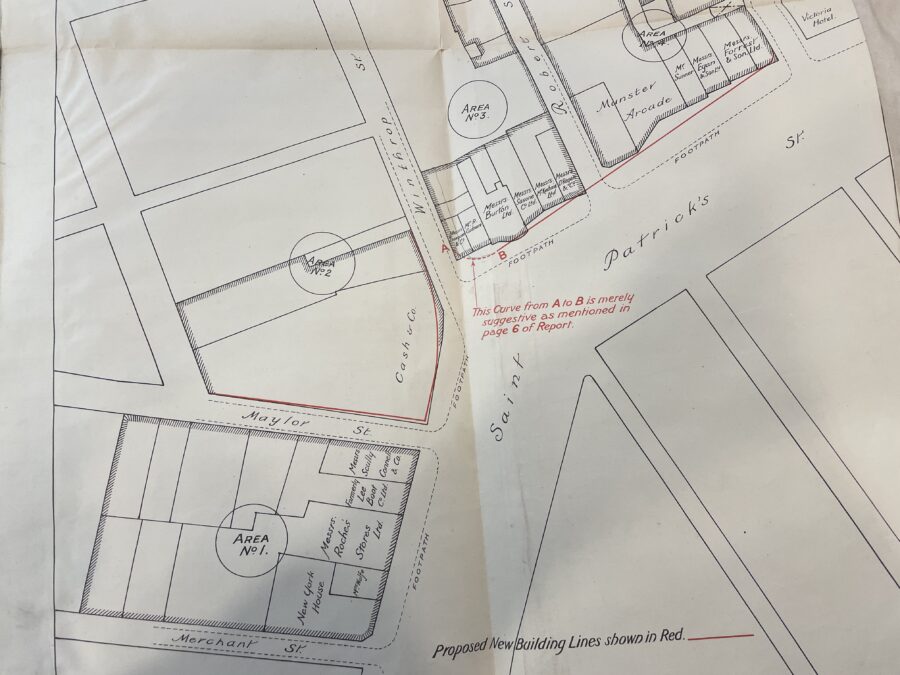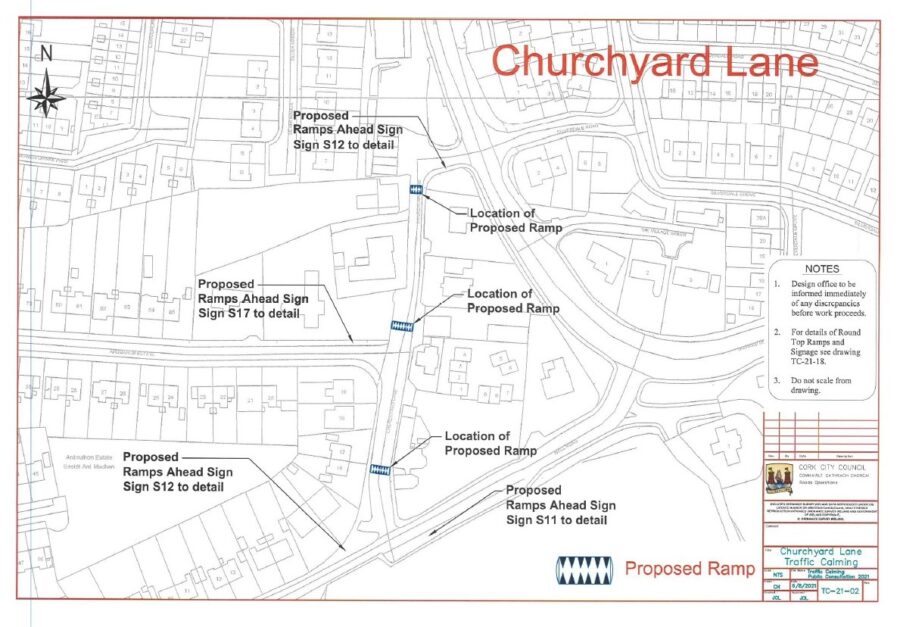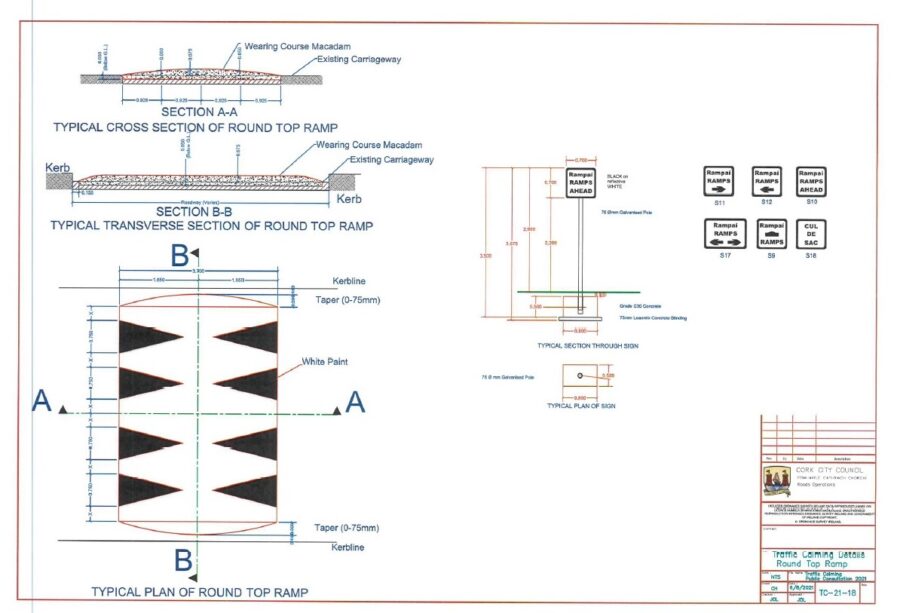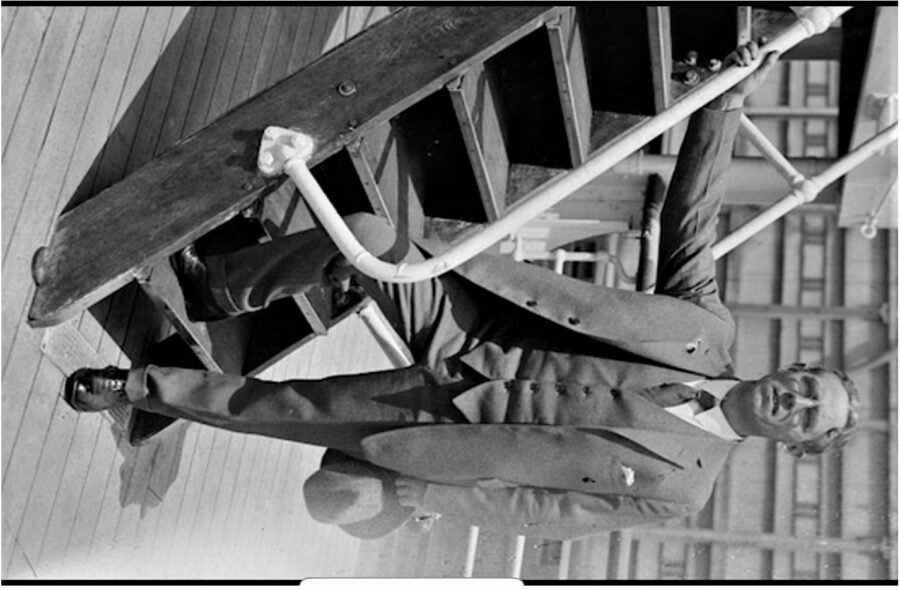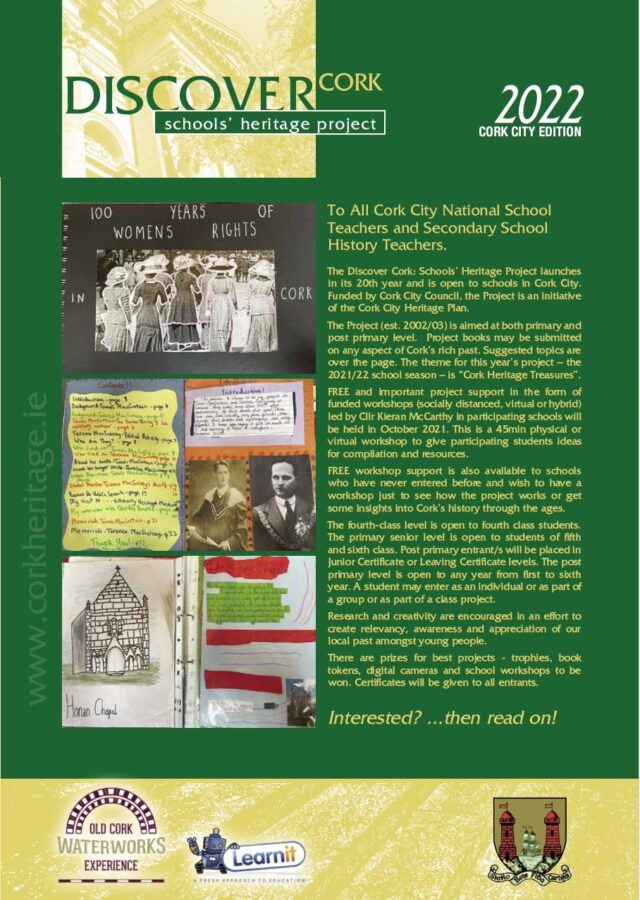
Kieran’s Our City, Our Town Article,
Cork Independent, 30 September 2021
Launch of Discover Cork: Schools’ Heritage Project, Year 20
It is great to reach year 20 of the Discover Cork: Schools’ Heritage Project. It is just slightly younger than this column but both this column, the school project and the walking tours are all about popularising more of Cork’s history and story for interested citizens and the next generation.
Over 15,000-16,000 students have participated in the Schools’ Heritage Project through the years with many topics researched and written about – from buildings and monuments to people’s stories and memories.
Covid-19 has brought many challenges to every part of society and never before has our locality and its heritage being so important for recreation and for our peace of mind. In the past eighteenth months, more focus than ever before has been put on places and spaces we know, appreciate, and attain personal comfort from.
The Schools’ Heritage Project is aimed at both primary and post primary level. Project books may be submitted on any aspect of Cork’s rich past. The theme for this year’s project is “Cork Heritage Treasures”. Funded by Cork City Council, the Project is an initiative of the Cork City Heritage Plan.
The Project is open to schools in Cork City at primary level to the pupils of fourth, fifth and sixth class and at post-primary from first to sixth years. There are two sub categories within the post primary section, Junior Certificate and Leaving Certificate. The project is free to enter. A student may enter as an individual or as part of a group or a part of a class entry.
Co-ordinated by myself, one of the key aims of the Project is to encourage students to explore, investigate and debate their local heritage (built, archaeological, cultural and natural) in a constructive, active and fun way. Projects on any aspect of Cork’s rich heritage can be submitted to an adjudication panel. Prizes are awarded for best projects and certificates are given to each participant. A cross-section of projects submitted from the last school season can be gleamed from links on my website, www.corkheritage.ie where there are other resources, former titles and winners and entry information as well.
Students produce a project on their local area using primary and secondary sources. Each participating student within their class receives a free workshop in October 2021. The workshop comprises a guide to how to put a project together. Project material must be gathered in an A4/ A3 size Project book. The project may be as large as the student wishes but minimum 20 pages (text + pictures + sketches).
Projects must also meet five elements. Projects must be colourful, creative, have personal opinion, imagination and gain publicity before submission. These elements form the basis of a student friendly narrative analysis approach where the student explores their project topic in an interactive and task-oriented way. In particular, students are encouraged (whilst respecting social distancing) to attain material through visiting local libraries, engaging with fieldwork, making models, photographing, cartoon creating, and making short snippet films of their area. Re-enacting can also be a feature of several projects.
For over twenty years, the project has evolved in exploring how students pursue local history and how to make it relevant in society. The project attempts to provide the student with a hands-on and interactive activity that is all about learning not only about heritage in your local area (in all its forms) but also about the process of learning by participating students.
The project is about thinking about, understanding, appreciating and making relevant in today’s society the role of our heritage, our landmarks, our oral histories, our environment in our modern world for upcoming citizens. So, the project is about splicing together activity on issues of local history and heritage such as thinking, exploring, observing, discovering, researching, uncovering, revealing, interpreting and resolving.
The project is open to many directions of delivery. Students are encouraged to engage with their topic in order to make sense of it, understand and work with it. Students continue to experiment with the overall design and plan of their work. For example, and in general, students who have entered before might engage with the attaining of primary information through oral histories. The methodologies that the students create provide interesting ways to approach the study of local heritage.
Students are asked to choose one of two extra methods (apart from a booklet) to represent their work. The first option is making a model whilst the second option is making a short film. It is great to see students using modern up todate technology to present their findings. This works in broadening their view of approaching their project.
This project in the City is free to enter and is kindly funded by Cork City Council (viz the help of Niamh Twomey, Heritage Officer) Prizes are also provided by the Old Cork Waterworks Experience, Lee Road.
Overall, the Schools’ Heritage Project for the past twenty years has attempted to build a new concerned generation of Cork people, pushing them forward, growing their self-development empowering them to connect to their world and their local heritage. Spread the word please with local schools. Details can be found on my dedicated Cork heritage website, www.corkheritage.ie.
Caption:
1119a. Front cover of 2021-2022 brochure for Discover Cork Schools’ Heritage Project.
